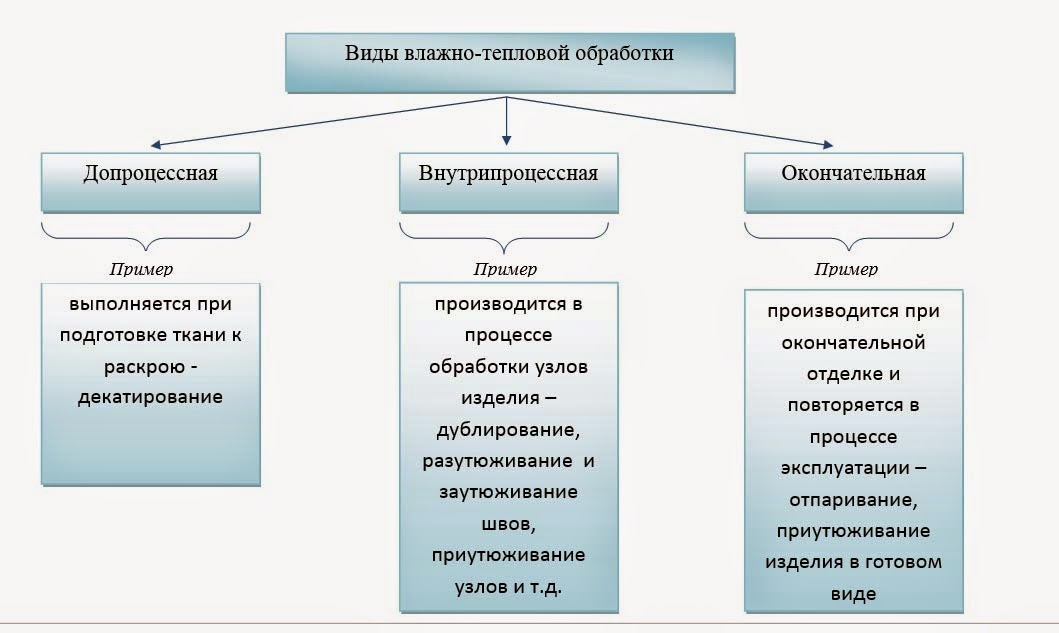Under wet-heat treatment (WTO or VTR) garments understand special processing of a part moisture, heat and pressure using special equipment.

The objectives of the WTO:
- giving smoothness;
- the thinning of joints between the edges;
- the linear dimensions of the individual sections of the parts;
- giving a forced shrinkage of the tissue;
- stabilization of the shape of parts and products;
- the formation of the product appearance and;Sedalia;
- the removal of Las.
The essence of the process of wet-heat treatment is shown in its stages:
the softening of the fibers with moisture and heat (by heat transfer processes — forced convection, conduction and thermal radiation); in giving the fabric a specific shape forming (the forming process); in the retention shape by removing moisture with heat and pressure (stabilization of form). The parameters of the WTO — temperature, exposure time, pressure and the degree of hydration. 
There are 3 ways of implementation of the WTO:
Ironing — the work surface of the equipment moves along the surface of the fabric. Pressing the working surface of the equipment is not moved on the surface of the fabric, but puts pressure on the fabric. Steam — the working surface of the equipment may specify the shape of a part, but the pressure has not. The effect of the WTO is achieved only by the successive steaming and drying of the product/parts.





